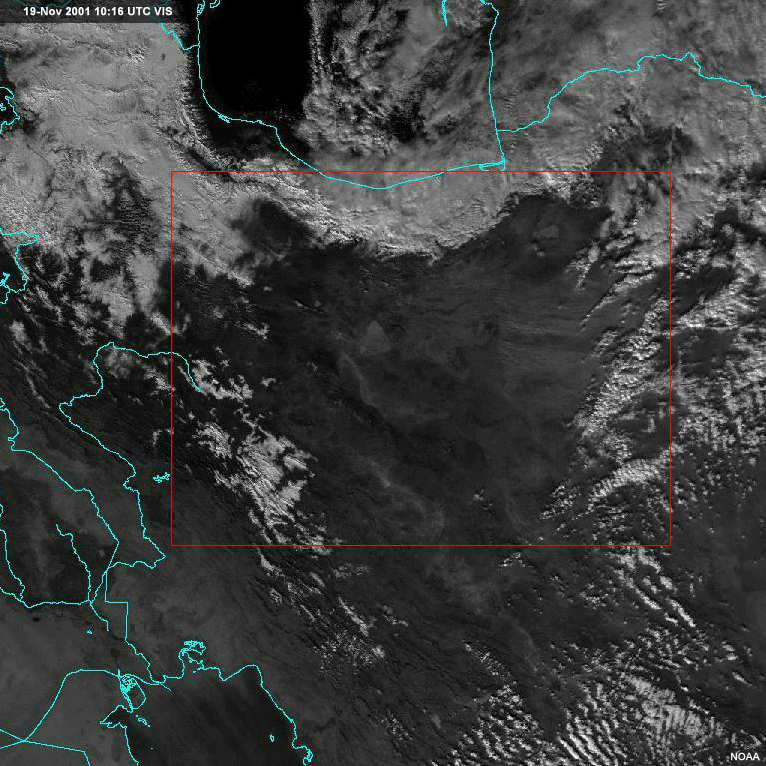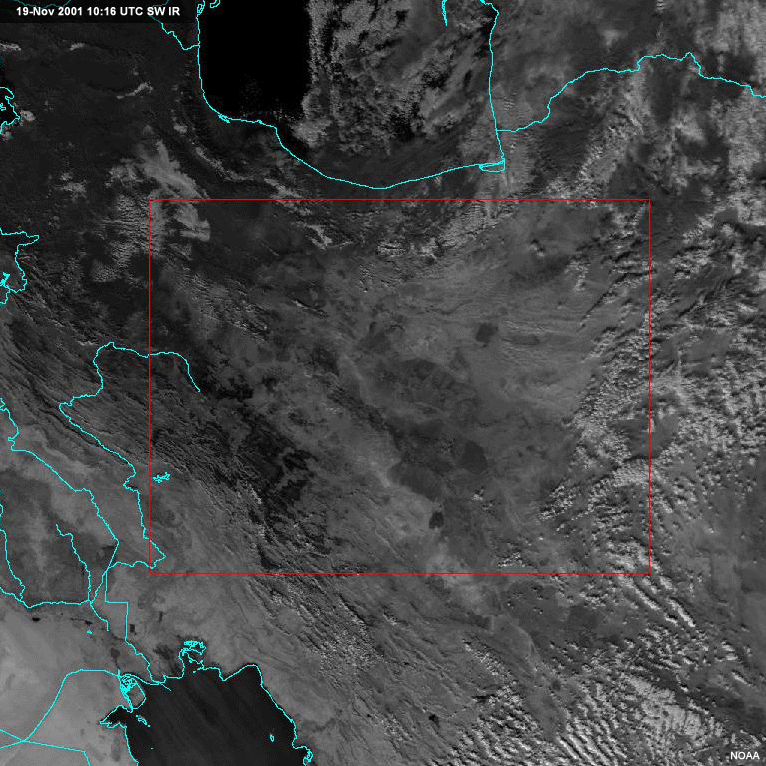
AVHRR Visible and Shortwave (SW or Near) IR Imagery at 1.6 µm Helps Separate Low Cloud From Snow on the Ground (Page 4 of 6)
Return to the previous menu.

To do a better job in identifying clouds over snow, we must look at NOAA AVHRR images from NOAA-16. A polar-orbiting satellite, NOAA-16 does not provide frequent image updates like Meteosat-5, but has five channels that allow multispectral imaging. This image is the AVHRR visible image whose finer spatial resolution yields better images over snow-covered regions than the previous Meteosat images. However, you must go to the next image to see the chief advantage of the AVHRR.

The NOAA-16 AVHRR instrument has a near-infrared channel at 1.6 µm for improved detection of snow and ice. Notice that snow cover, which was so bright in the visible image, is dark in the 1.6 µm image! Snow and ice reflect little energy in this channel when compared with water and ice clouds. Thus, on the 1.6 µm channel, the white areas in the northwestern part of Iran can be positively identified as low clouds, which contrast well against the poorly-reflecting snow background.